Why Amsterdam wants tourists to 'stay away'

Amsterdam is taking a step closer to saying good riddance to wild bachelor parties and rowdy tourists.
The popular destination is launching a new campaign this spring aimed at curbing tourism-induced "nuisance and overcrowding" and building a more responsible visitor economy by 2035, according to the city's tourism plan . The campaign's new rules will impact some of the top tourist attractions: the Red Light District, river cruises, pub crawls and coffee shops.
City officials say they are tired of businesses who "abuse the city’s image to promote it as a place of 'unlimited opportunity,' " according to the Vision on Tourism in Amsterdam 2035 . The city has long attracted tourists from around the world wanting to experience its liberal laws around prostitution tolerance of soft drugs .
Should I book my summer travel now?: Travel experts share how to find the best deals.
Delta Air Lines was the most on-time carrier in 2022, according to DOT data
Officials say it's been "at the expense of liveability and accessibility for residents."
"If it we go on like this, I think in 10 or 20 years, people will no longer be living in the inner city," Amsterdam mayor Femke Halsema told Dutch News . "They will have moved out because they can’t afford it, because the atmosphere is too common, because the city has become too dirty … in all of the senses."
The campaign seeks to shine the spotlight on onto city's cultural wealth, like historic canals and museums. There's even an initiative called "Stay Away," which actively discourages visitors planning to "go wild" not come.
This isn't the first time Amsterdam has cracked down on troublesome tourists. In 2019, the city banned guided tours in the Red Light District. Last year, the mayor wanted to ban non-residents from participating in coffee shops.
Read below to learn how the new campaign could impact travelers.
It's not all about the Red Light District: 13 cool ways to spend a long weekend in Amsterdam
Managing overcrowding: Why bookings might be the future in Hawaii

What are some of the proposed measures?
The tourism plan outlines measures that "have implications for overnight stays, excess tourism and disturbances."
- Reducing the hours of operations for bars, clubs and the Red Light District on the weekends. Bars and clubs will close at 2 a.m. with no new visitors allowed after 1 a.m., while sex work businesses will close at 3 a.m., three hours earlier than currently.
- Limiting river cruises
- Expanding the ban on guided tours and pub crawls
- A ban on smoking cannabis in designated areas of the city center
- Restrictions on embarkation and disembarkation points for party boats in the Red Light District.
- Converting hotels to residential or office use
When will these new rules be in effect?
The campaign launches this spring and the new rules are said to be implemented in mid-May . But the overarching rebranding of Amsterdam's visitor economy will take place over the next 12 years by 2035.
Will Amsterdam limit the number of tourists?
Yes, the city is looking to take action on the number of overnight tourists. In 2019, over 18.4 million overnight tourists came to Amsterdam. In 2021, an ordinance called " Amsterdam Tourism in Balance " was adopted by the city council that set a cap on the number of visitors to 20 million. If over 18 million people come to Amsterdam, "the municipal executive is obliged to take action" – this year, the city predicts that many tourists to arrive.
Katheen Wong is a travel reporter for USA TODAY based in Hawaii. You can reach her at [email protected]
Awesome, you're subscribed!
Thanks for subscribing! Look out for your first newsletter in your inbox soon!
The best things in life are free.
Sign up for our email to enjoy your city without spending a thing (as well as some options when you’re feeling flush).
Déjà vu! We already have this email. Try another?
By entering your email address you agree to our Terms of Use and Privacy Policy and consent to receive emails from Time Out about news, events, offers and partner promotions.
- Things to Do
- Food & Drink
- Arts & Culture
- Time Out Market
- Coca-Cola Foodmarks
- Los Angeles
Get us in your inbox
🙌 Awesome, you're subscribed!

How Amsterdam is fighting back against overtourism
Four things we can learn from the Dutch capital to make the rest of the world a nicer place too

You can only imagine locals felt relieved. In Amsterdam last March, lockdown set in and tourism was put on pause. For the first time in forever, there weren’t tens of thousands of travellers gawping at girls, lighting up in coffeeshops, ordering poffertjes and stroopwafel on every corner. Amsterdam breathed.
RECOMMENDED: The 37 best cities in the world in 2021
Now it wants to carry on breathing. The Dutch capital has brought in a raft of measures to improve life for locals and create a more sustainable future for the city. Here are some initiatives we’d like to see in other cities too.
Ban new hotels
Have you heard about the new ‘iceberg hotel’ in London’s Leicester Square? It’s got a six-storey basement, so there’s a lot going on beneath the surface. This sort of gimmicky opening would never land in Amsterdam now. The city has banned new hotels in the centre altogether, encouraging development on the outskirts, spreading the benefits of tourism across the city.
Ban short-term holiday lets
We have literally no idea why you’d want to stay around De Wallen , Amsterdam’s red-light district. But until last July, hundreds of thousands of travellers did every year, exacerbating housing problems, with so much real estate given over to short-term holiday lets. Now Amsterdam has banned them outright in three central districts, and the whole city could be next.
Ban souvenir shops
Souvenir shops may seem innocent enough. But there comes a point when there are simply too many. For three years, Amsterdam has banned new tourist-oriented businesses from opening within its Canal Belt. That includes sweet stores, souvenir shops and ice-cream parlours.
Ban arseholes
Let’s be honest: the worst thing about central Amsterdam is the number of drunk/mashed idiots stumbling from Irish pub to coffeeshop. Now the city is considering barring foreign visitors from its cannabis-peddling haunts. In future, it seems, Amsterdam wants a different kind of tourist. And as for us? We could certainly do without people weeing and vomming all over our city every weekend too.
More cool plans:
Five genius urban projects helping us think long term
How Paris plans to become Europe’s greenest city by 2030
Famous streets all over the world are going car-free
- Huw Oliver UK Editor
Share the story
An email you’ll actually love
More on Future Cities
Discover Time Out original video
- Press office
- Investor relations
- Work for Time Out
- Editorial guidelines
- Privacy notice
- Do not sell my information
- Cookie policy
- Accessibility statement
- Terms of use
- Modern slavery statement
- Manage cookies
- Advertising
Time Out Worldwide
- All Time Out Locations
- North America
- South America
- South Pacific
- Share full article
Advertisement
Supported by
In Empty Amsterdam, Reconsidering Tourism
Before Covid-19, the city was packed with visitors. Now efforts to rein in the expected post-pandemic crowds are ramping up, but not without controversy.

By Paige McClanahan
When international travel came to a halt last year, Amsterdam — like cities everywhere — was drained of tourists almost overnight. The effect, according to Sonia Philipse, the owner of the restaurant Lavinia Good Food, was both surreal and serene: Without the crowds, her city was quieter and more beautiful than she had ever seen it.
“At this point we’re missing our tourists again,” Ms. Philipse said recently. “But I think there was a moment of really big joy in getting our city back.”

It’s a tension that Amsterdam has been trying to navigate for years: how to embrace its status as a vibrant, international hub without making the city unlivable for its residents — and without letting go of its famous, free-spirited roots.
Now, with visitor numbers still low, Amsterdam’s leaders are trying to introduce important new restrictions on short-term vacation rentals, sex tourism and cannabis sales to visitors — all in an effort to ensure that old problems stemming from tourism don’t reappear when visitors return.
The measures make Amsterdam one of Europe’s front-runners in taking a hands-on approach to managing tourism. But even as many locals may be enjoying the current quiet in Amsterdam, many also disagree with some of the city’s tactics.
The tipping point
The complaints from Amsterdam residents started to crop up in 2013, when tourism had fully bounced back from a downturn following the financial crisis of 2008. Locals said that tourists were being loud and disruptive in the city center; disrespecting prostitutes; occupying short-term vacation rentals that drove up housing prices; and taking over some of the city’s most beautiful, historic areas.
Visitor numbers grew steadily every year from then onward — 2020 excepted — and the pressure of all of those tourists continued to escalate. In 2019, a record-breaking 21.7 million people visited Amsterdam, a city with a population of about 870,000.
“You see this tipping point where the visitor economy causes more harm for the locals than it adds value, and then you’re in an unhealthy situation,” said Geerte Udo, the director of amsterdam&partners , a nonprofit, government-supported organization that manages tourism in the city. “We need to change everything we have on offer in the city center if we want to bring the balance back to living, working and recreating,” she said.
Before the pandemic, city leaders had already put in place a number of measures to try to mitigate the problems stemming from tourism, including a ban on guided tours of the Red Light District; a ban on new hotels in the city center; an increase in the tourist tax ; and a ban on new shops that cater to tourists. As early as 2014, Amsterdam stopped promoting itself as a destination in new markets overseas. Instead, the city’s marketing organization worked to guide and manage all of the visitors who showed up in the city.
But even with those measures in place, tourism continued to grow, and the rising numbers attracted attention. By 2019, news articles decrying surging tourist numbers mentioned Amsterdam , alongside Venice and Barcelona, as a prime example of overtourism in Europe.
Sex, cannabis and the “monoculture”
Since the pandemic hit, Amsterdam’s leaders — led by the mayor, Femke Halsema — have continued the push to regulate tourism, with a strong focus on the Red Light District, an ancient part of Amsterdam’s city center and a huge magnet for tourists.
On a typical Saturday night before the pandemic, the district, known as De Wallen, would have been heaving with young men going from bar to bar — perhaps stepping into sex shops or coffee shops or eyeing scantily clad prostitutes posing in their windows. Several Amsterdammers interviewed for this story said that they would never consider visiting the neighborhood at such a time because of the rowdy, crowded scene.
“The public space is dominated by facilities that are almost all redolent of sex, drugs and drink,” Ms. Halsema wrote of the historic city center in an official letter to the city council in July 2019. “Constantly increasing numbers of visitors, misconduct, a shrinking retail mix, rising property prices, commercialization of public space and criminal subversion all call for measures to be taken.”
In the same letter, Ms. Halsema proposed four scenarios for the future of sex work in the Red Light District. (Prostitution is legal and regulated in the Netherlands.) One of those scenarios — the relocation of sex workers to a “prostitution hotel” elsewhere in the city — has recently attracted the support of a majority of city council members. The proposal has not been fully approved, however; further discussions are scheduled this summer, a spokeswoman for the city of Amsterdam said.
Another headline-grabbing proposal from the mayor’s office would make it illegal for visitors to buy cannabis in Amsterdam’s coffee shops, which are concentrated in the Red Light District and which have long been popular with tourists. The potential effects of such a move are currently being studied, the spokeswoman said.
And last summer, in response to complaints about the rise in home sharing, the city imposed a complete ban on all short-term vacation rentals in three neighborhoods in the city center, including the Red Light District. The ban was overturned in court earlier this month, but city officials are now working to find a way to reimpose the measure legally, the spokeswoman said.
Amsterdam has also joined more than 20 other European cities to advocate stricter rules on vacation-rental platforms at the European Commission and in the European Parliament.
The measures are in line with the Dutch hands-on approach to tackling problems, the city’s deputy mayor, Victor Everhardt, said, adding that, while the pandemic had not shifted the city’s course of action, it may have accelerated its pace.
Amsterdam residents have high expectations for city life, and politicians aren’t afraid to push through new measures, Mr. Everhardt explained — even if some of those measures may end up being challenged in court. “We’re just moving ahead and dealing with the problem,” he said, adding: “There is no silver bullet.”
But some of the proposed measures have proved controversial. The idea of relocating sex workers, for instance, is widely opposed by those who work in prostitution, said Irina, a spokeswoman for PROUD , a union of about 300 prostitutes across the Netherlands.
“The problem is not with the prostitutes. We’ve been in the same area for centuries,” said Irina, who declined to share her last name, citing privacy concerns. “The issue is the exploding number of tourists coming to Amsterdam, and they’re coming for a whole bunch of reasons.”
Irina noted that the government’s Project 1012 — an initiative that closed more than 100 sex-worker windows in the Red Light District over the past decade — had done nothing to ease the neighborhood’s overcrowding or reduce disruptive behavior. Instead of focusing on prostitutes, she added, the government should put more police officers on the streets and ramp up the enforcement of existing rules against public urination, public drunkenness and disturbing the peace.
Sex workers “are being scapegoated, together with the coffee shops, for causing the problems — which we are not,” Irina said.
The mayor’s recent proposal to forbid Amsterdam’s coffee shops from selling cannabis to non-Dutch residents has similarly attracted opposition. Tourists and locals who frequent the city’s 167 licensed coffee shops come to relax, socialize, maybe play a board game — and smoke cannabis, which is decriminalized for personal use in the Netherlands. Alcoholic drinks and hard drugs are not allowed.
Joachim Helms, a coffee shop owner and spokesman for the Dutch Cannabis Retailers Association, said that the proposed ban would force visitors to buy their cannabis on the street, where they are more likely to be taken advantage of; it would also damage Amsterdam’s reputation as an international city, he said.
“If people have experienced a lot of disturbance from tourists in the city, then of course you have to look at where that disturbance comes from,” he said. “Usually, it’s guys being loud on the street and being drunk — and those aren’t typical coffee shop people.”
Support for the prostitutes and coffee shop owners was echoed in several interviews with Amsterdam residents, including Roy Van Kempen, a 31-year-old marketing manager who has lived in Amsterdam since 2008.
“Paris has the Eiffel Tower, and we have the Red Light District and this idea that everything is possible in Amsterdam. And I would like to keep it like this, actually,” he said.
But Irina, Mr. Helms, Mr. Van Kempen and half a dozen other Amsterdammers interviewed agreed that the city center has a major problem: A tourism “monoculture” has taken root, and residents are being pushed out. Businesses and services that used to cater to locals — high-quality bakeries, butcher shops, and the like — have been replaced by trinket shops, ice-cream parlors and “Nutella shops,” which serve takeaway waffles and other treats smeared in the hazelnut spread, mainly to tourists. Meanwhile, rising housing prices — due, in part, to the rise of Airbnb and other vacation rental platforms — have made the city center unaffordable for many locals.
This monoculture has been thrown into the spotlight over the past year, Ms. Udo said, adding that she had been struck by how deserted the city center has felt during the pandemic, especially compared to other parts of Amsterdam. “That was a real eye-opener,” she said. “There are not enough people living there and working there to get this liveliness back in the neighborhood when the visitors are gone.”
Marry an Amsterdammer
Alongside the restrictions proposed by the mayor’s office, city officials and some residents have also tried softer approaches to tackling the problems associated with tourism, some of which were rolled out with success before the pandemic.
One critical strategy has been to try to reach visitors before they even arrive. Amsterdam’s Enjoy and Respect campaign, which launched in 2018, targeted the primary source of the behavior problems — Dutch and British men between the ages of 18 and 34 — with messages about the fines they could incur by urinating in the street, littering or getting drunk in public areas. A subsequent survey showed that the messages had reached at least part of that audience, but measuring the campaign’s effectiveness has proved to be a challenge.
To ease overcrowding in the center, amsterdam&partners has been encouraging visitors to explore other parts of the city, such as Amsterdam Noord, where a former industrial shipyard hosts flea markets, music festivals and outdoor movie screenings in the summer. In Nieuw-West , visitors can sample local nightlife or stroll around Sloterplas Lake. But even if such areas are successful in attracting visitors, it can be difficult to get substantial numbers of tourists to move away from the most popular spots.
“People often arrive with a lot less orientation and understanding of where they’re visiting than we imagine, and hence they end up in the same city-center neighborhoods,” said Peter Jordan, head of insights at Toposophy , an agency that has advised amsterdam&partners. “That happens in cities everywhere — and it happens in Amsterdam.”
The Red Light District and other neighborhoods between the city’s Central Station and Dam Square tend to attract the biggest crowds, Mr. Jordan said, as well as the areas immediately around major attractions like the Rijksmuseum and the Anne Frank House. Of these, he added, the Red Light District faces the biggest challenges.
Elena Simons, one of the leaders of Amsterdam’s Reinvent Tourism movement, is working to find new and constructive ways to engage the city’s tourists. Ms. Simons is also one of the authors of “The Untourist Guide to Amsterdam” and the co-creator of a project that allows tourists to “ marry an Amsterdammer for a day.” This alternative tour, which launched in 2019, is a four-hour experience that starts with a fake wedding (rings, gown and flowers included) and includes a personalized jaunt around a lesser-known part of the city.
The point of such efforts, Ms. Simons said, is to find ways for tourists to make meaningful connections with Amsterdam residents, and even to have a positive impact on the city — whether by weeding at an urban farm or joining a weekly litter cleanup. The organization’s work was cut short by the pandemic, Ms. Simons said, but she is optimistic that interest will pick up quickly when visitors return. However, with Covid cases on the rise again in the Netherlands and many other European countries, it may still be some time before travelers from outside the Continent are able to visit.
Mr. Jordan, the tourism analyst, said that other European tourist destinations that are dealing with similar challenges could learn a lot by studying Amsterdam’s experiences.
“Something that I admire about Amsterdam is that they’ve been prepared to be honest and show that they recognize what the issues are and very visibly take steps to deal with it,” Mr. Jordan said, “because other cities haven’t necessarily got that far.”
Follow New York Times Travel on Instagram , Twitter and Facebook . And sign up for our weekly Travel Dispatch newsletter to receive expert tips on traveling smarter and inspiration for your next vacation.

Amsterdam to limit tourism to 20 million overnight stays per year
The Amsterdam city council adopted a regulation that limits tourism in the Dutch capital to 20 million tourist overnight stays per year. The municipality will "intervene" if that limit is surpassed, AT5 reports.
The 'Tourism in Balance' regulation does not specify what measures the municipality will take if the number of tourist overnight stays exceeds 20 million per year. But tried and trusted measures like limiting Airbnb , increasing tourist tax , or making the Red Light District less attractive with limits on alcohol sales are expected .
The regulation also states that the city will intervene if the number of tourist stays falls below 10 million. That is logical, Renier van Dantzig, D66 leader in Amsterdam, said to the broadcaster. "Such a lower limit is quite important because everyone now sees that there are far too few tourists in Amsterdam. Corona of course wreaked havoc. That means empty hotels, but also that our cultural institutions are having a hard time," he said.
"So first we have to make sure that we get the tourists who really come for the beautiful city, back to Amsterdam. But we must not let it get out of hand. So if we get too close to the upper limit, we have to take measures to prevent that," Van Dantzig said.
This regulation was based on a citizens initiative, that collected 30 thousand signatures. "Historic that we have succeeded in adopting a regulation from the people of Amsterdam. The strength of this regulation is that we agreed together how many tourists we actually think are good for Amsterdam. Both the minimum and the maximum level."
Amsterdam will have Europe’s highest tourist tax in 2024. Here’s what that means for your travel budget

Oct 13, 2023 • 5 min read
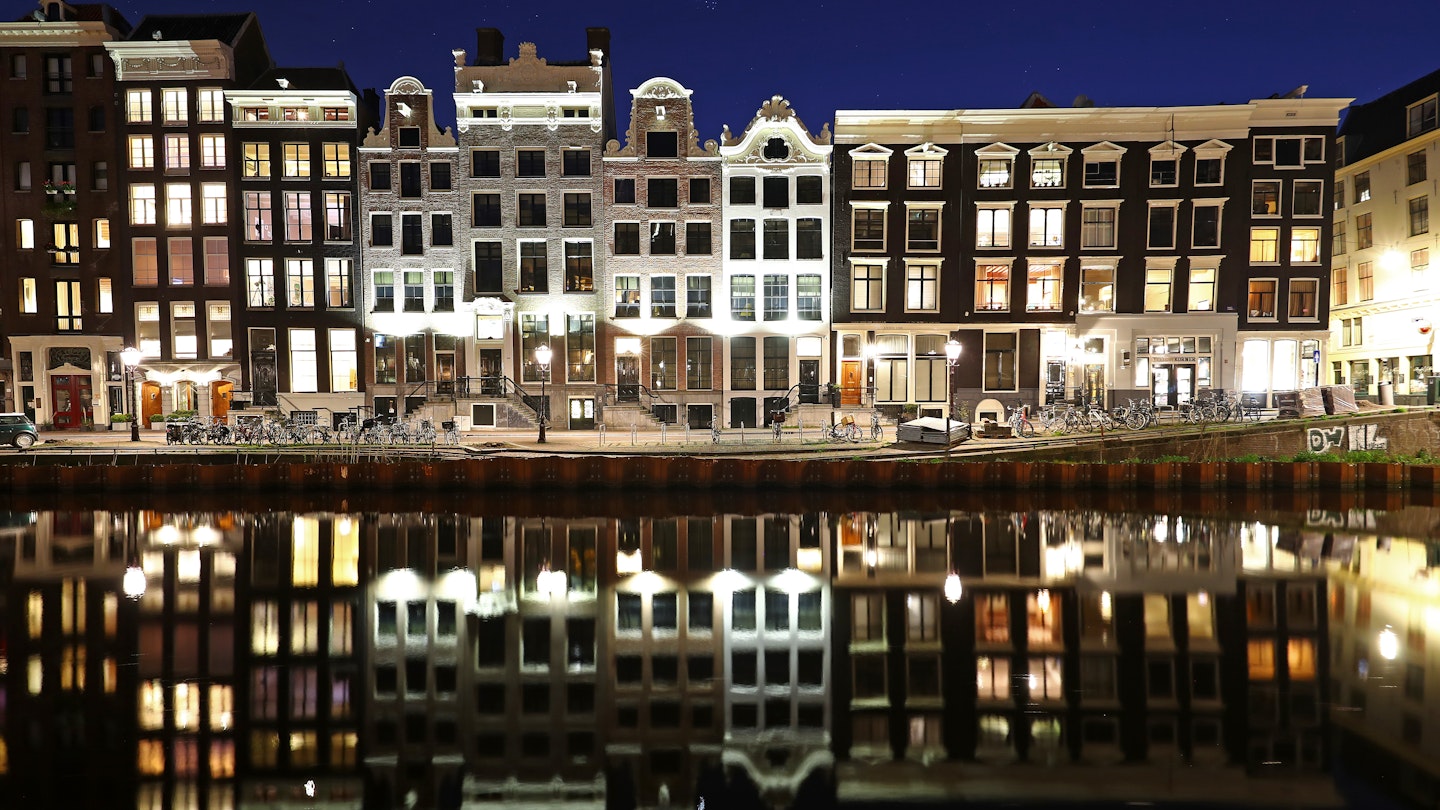
Starting in 2024, hotel taxes will go up by 5.5% in Amsterdam © Dean Mouhtaropoulos / Getty Images
Next year, visiting Amsterdam will get more expensive.
The Dutch capital has confirmed a rise its tourist tax on hotel rooms to 12.5% in 2024 – making for the highest tourist tax in Europe. The increase will apply to travelers staying overnight in hotels, short-term rentals or guesthouses, and affect those visiting on cruise ships, too.
So what is behind the city’s decision? And how will that affect your traveling plans?
What the change means for your hotel bill
Amsterdam’s current tourist tax stands at 7%, and is set to increase to 12.5%. This means that next year, the tax on the average room rate of €175 ($186) per person will rise from $15.25 ($16.18) to €21.80 ($23.12) per night. In comparison, Barcelona's tourist taxes average about €2.25 per person per day, while in Paris you can generally expect to pay about €4 per person, per night.
Additionally, the tax for cruise-ship passengers will go up from €8 to €11 ($8.48 to $11.66) per visitor, per day.
Tourism taxes have become commonplace in Europe. Still, in contrast to many other cities, Amsterdam levies its tourist tax as a flat rate per day, and as a percentage of the accommodation cost, payable upon each visitor’s arrival at their hotel. This unique approach can sometimes lead to confusion and unexpected expenses.

Why is Amsterdam hiking its tourist tax?
In 2022, Amsterdam welcomed 17 million tourists, a number projected to grow to over 20 million in 2023 . Given the city’s population of nearly 900,000, it’s no surprise that there’s a growing aversion to this number of visitors. The mass-tourism trend is a significant concern for residents and businesses, expressed largely through complaints about noise and unruly behavior. These concerns are underscored in Amsterdam’s Tourism Policy , which explicitly acknowledges the need to address tourism-related nuisances and disturbances. The city is actively working to prevent the kind of tourism that compromises the quality of life for its residents.
Ivan Saprov, founder of US-based travel-tech company Voyagu, supports the idea that popular tourist destinations like Amsterdam have a legitimate reason to impose taxes on every visitor. “Amsterdam is also grappling with the challenge of balancing its tourist appeal and maintaining its unique charm,” he says. “There’s an ongoing debate on whether the city truly needs such a high influx of tourists. A proposal to relocate the famed Red Light District is indicative of this struggle.”
A major rationale for the tax is a desire to change how visitors see Amsterdam. Famous as a free and open city, Amsterdam has been advertised by some businesses as a place of “unlimited possibilities,” creating a sense that in the city, anything – or any behavior – goes.
City officials are therefore seeking to promote and encourage products, activities and services that contribute positively to the city and its residents. The effort has included banning bachelor parties and organized pub crawls that cause disturbance, implementing earlier closing times for bars and clubs, and introducing a ban on smoking cannabis on the street in parts of the city center.
This year, tourism officials launched the “Stay Away” campaign to discourage young tourists from visiting Amsterdam to engage in excessive partying. The campaign seeks to raise awareness about the impact of their behavior and promote responsible, respectful tourism.

Where will the new tax revenues go?
The city’s government says the extra revenue from the tourist tax hike will be invested in neighborhoods and districts where the need is greatest. The funds will address local challenges, support green and recreational spaces, and support such community resources as youth centers.
A principal goal of the higher tourist tax? To impose no financial burden on the city’s residents. Hester van Buren, Amsterdam’s deputy mayor for finance, emphasized this point, stating that residents are already struggling with inflation. As a result, next year the tax increase will not affect residents but will target only tourists instead.
“Visitors will thus help to pay for the city to carry out its tasks,” Van Buren says. “This allows us to address the consequences of overtourism and direct additional resources to keep the streets clean and solve acute problems in neighborhoods and districts.”

Saprov highlights the potential for tourism-related taxes to fund sustainable tourism initiatives, including conservation efforts and community-based infrastructure projects. He notes, “Amsterdam tourist tax is further increasing to fund the extra contribution to the city’s responsible growth, more green and sport space to become more sustainable.”
Not everyone supports this tax increase, however, since it will raise hotel bills. Erwin van der Graaf, an executive at Accor, has written that the tax was unfair to the hotel and cruise sectors. He asked why “the significant revenues from tourist tax are not dedicated to mitigating the effects of tourism and invested in more capacity for garbage collection and law enforcement, for example. To date, tourist-tax revenues are added to the generic budget of the city, and we can only guess what these revenues are spent on.”
Amsterdam Maths
How do average costs in Amsterdam play out? Be prepared for some eye-opening expenses. On average, a Friday-to-Sunday trip to Amsterdam can set you back around €550 ($579.18). Hotel costs alone can amount to €418.24 ($440.43) per person (and will rise considerably once the new tourist tax is added) and daily food expenses can add approximately €33 ($34.75) per day, marking a 9% year-on-year increase, according to Amsterdam Tips . Don't forget to factor in expenses like train tickets from the airport, bike rentals, and admission to the MOMA museum, which can tally up to another €50 ($52.65).
Explore related stories
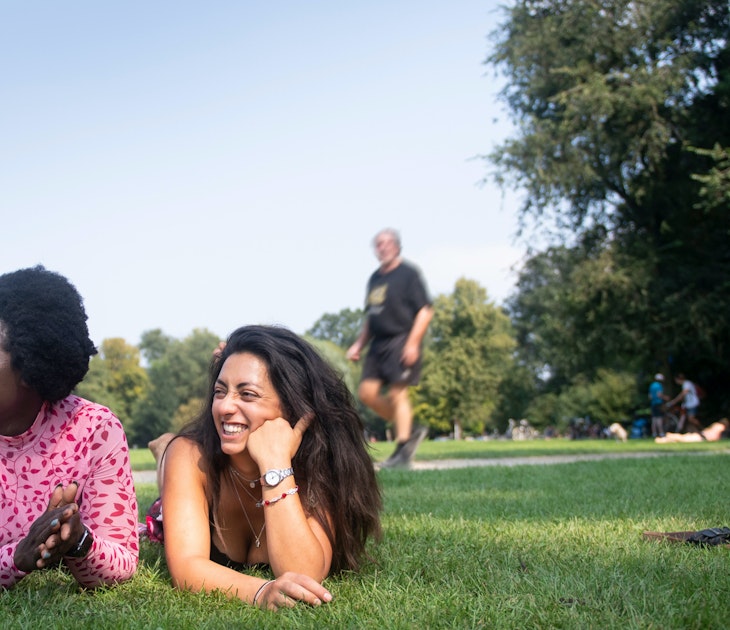
Destination Practicalities
Mar 16, 2024 • 7 min read
Locals in Amsterdam have a few expectations for tourists who visit the city. Here's everything you need to know before you go.

Mar 13, 2024 • 7 min read

Mar 12, 2024 • 8 min read

Jan 2, 2024 • 8 min read

Dec 19, 2023 • 6 min read

Dec 15, 2023 • 4 min read

Sep 19, 2023 • 4 min read

Jul 9, 2023 • 7 min read

Jul 9, 2023 • 8 min read

Amsterdam issues new travel rules for tourists
The rules will mainly affect the red light district
- 11:36, 10 FEB 2023

It will soon be illegal to smoke cannabis on the street in Amsterdam's red light district.
Amsterdam has announced the city is making some changes to crack down on nuisance tourism. A new law is set to be passed that means smoking weed in public there will no longer be allowed during certain times.
Sex workers will also have to close their venues at 3am. The city council also announced on Thursday that restaurants and bars would have to close by 2am on Fridays and Saturdays and no new visitors would be allowed into the old city district after 1am.
READ NEXT: Jet2, Thomas Cook and Tui reassure customers over Turkey travel plans
The piece of legislation will most likely come into force from mid-May, as part of a series of policies aimed at improving safety and reducing nuisance for residents. It is hoped that the move will give locals more "peace late at night".
In a press release announcing the new measures, a spokesperson for the city said: "The atmosphere becomes dire, particularly at night. A lot of people are under the influence [of drugs and alcohol] and hang around for a long time.
"This comes at the expense of a good night’s sleep for residents and the liveability and safety of the whole neighbourhood."
If the tough measures don't work, the city says, it will look to ban smoking weed outside coffee shops as well.
Receive newsletters with the latest news, sport and what's on updates from the Liverpool ECHO by signing up here
Nurse 'nearly fell over' after being fined £150 for feeding ducks along river
Lottery winner stole £15k of FootAsylum trainers
DVLA warns motorists to check details on driving licence
Emmerdale's Paddy Kirk 'says goodbye' as he battles depression in heartbreaking twist
- Most Recent

- International edition
- Australia edition
- Europe edition
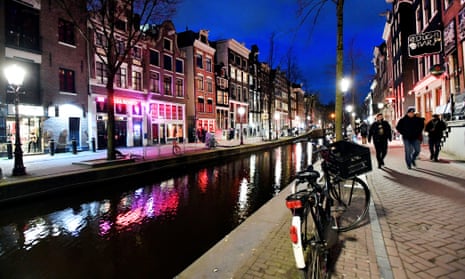
‘It damages our free spirit’: war on British tourists won’t work, say Amsterdammers
Young Britons are the target for a crackdown on antisocial behaviour in the city – but are they the real problem?
It’s 9.30pm and groups of British lads are gearing up for a big night out in Amsterdam’s red light district.
Although the narrow streets echo with French, German, Spanish, Dutch and Irish banter, this week Amsterdam city council launched a campaign to tell Britons from 18 to 35 in search of a “messy night, to stay away”. Lewis Flanigan, 24, from Middlesbrough, is taking the chance to party while he still can. “My plans are for sex and drink, going around the bars until 6am,” he said, peering into brothel windows beside the Oudezijds Achterburgwal canal. His two friends – unnamed as they have “serious jobs” – have also come before things change.
As Amsterdam braces for another rowdy weekend of visitors, things are indeed changing in this medieval district , where sex workers have operated for centuries. This is the first weekend in which 249 window brothels in De Wallen (the red light district) will close at 3am instead of 6am and bars will shut at 2am. From mid-May, cannabis smoking will be banned in public. And people in Britain searching the net for terms such as “stag night Amsterdam” now see city marketing videos warning of costly souvenirs such as fines, a criminal record or hospitalisation .
A city with a population of 880,000 but 18 million tourists a year is taking action against its image as a hub for sex, drugs and rock’n’roll. At a meeting in Amsterdam Noord on a proposed multistorey erotic centre – to replace 100 sex-worker windows – the mayor, Femke Halsema, said on Wednesday the situation was a health hazard: “It is so busy that emergency services cannot get through the canals any more,” she said. “We have to find solutions.”
However, even Diederik Boomsma, the local councillor who coined the term “glassy eyed tourist zombies” to describe the worst partygoers, is wondering why his compatriots are so happy to stigmatise British people. Are the UK’s young men really as bad as all that?
Unfortunately, the answer is yes, say tourism experts and Dutch comedy sketches … but, then, so are the Dutch. In 2014, the then London mayor, Boris Johnson, and the late Amsterdam mayor Eberhard van der Laan clashed swords over whether the problem was “sleazy” Amsterdam or “how thousands of fellow Brits behave”. By 2018, research confirmed “the majority of those causing nuisances are (most often groups of) men between 18 and 34 from the Netherlands and the UK who visit Amsterdam with only one purpose in mind: partying and acting crazy”.
A tourism expert, who for years worked on changing Amsterdam’s image, said many Britons took the invitation to be yourself to mean being dressed in a tutu, lying drunk with all your mates in a gutter at 9.30am. “A lot of French and Italians come here to smoke dope and cycle around the city ringing their bells,” she said. “But with Brits, it’s the alcohol. The Dutch think of bowler hats, gentlemen and bus drivers who say good morning. But put three beers in them and a kind of monster is unleashed!”
The natives, however, are just as bad. In recent years, Dutch tourists and football fans have been criticised for riots in Rome , raving in Spain and even a deadly brawl in Mallorca – so the “stay away” campaign will be expanded to the Dutch themselves next.
But some think the city is taking the wrong approach. Theodoor van Boven, founding director of the Condomerie shop, and in a group of businesses trying to regulate nuisance, said the campaign was “scandalous, stigmatising for the image of Brits and doomed to fail”. He said: “My wife recently had five drunk Brits in the shop, and went to talk to them, wobbling back and forth. Eventually they got seasick and went away.
“Businesses and residents want to deal with antisocial behaviour and dealers, not a ‘stay away’ campaign. The Dutch, Amsterdammers, North Hollanders and other nationalities can misbehave just as well!”
Oscar Coster, a barman in the Old Sailor cafe bar, agreed. “They were busy for years trying to get so many tourists to Amsterdam, and now they want them to go away!” he said. “Brits aren’t the worst. It’s big groups of men. We don’t let them in; it doesn’t matter where they come from.”
after newsletter promotion
Down the road on the Utrechtsestraat, Robbert Overmeer, a bar owner and chairman of a local business association, pointed out that during the Covid pandemic, in the absence of British tourists, antisocial behaviour by those of other nationalities suddenly became apparent, for example French, German and Belgian tourists sleeping in their cars , urinating and worse next to them, and buying drugs to take home.
“The French and Germans are still coming,” he said. “It’s not only the English who make problems. Banning non-residents from buying drugs in coffee shops is the way to stop it.” That idea was proposed by the city’s mayor but rejected by the council.
Others believe most British visitors contribute in a positive way. “While the stag dos get the headlines, some 16,000 resident Brits and their families quietly get on with their lives in Amsterdam,” said Tricia Tarrant, of the British in the Netherlands group. “If this campaign helps to reduce the numbers of drunken tourists, so much the better, although reservations have been expressed in our group whether it’ll work, or might put off more people from visiting.”
Some are afraid that advertising these problems might actually glamorise them. Tim Verlaan, assistant professor in urban history at Amsterdam University’s Centre for Urban History, said the campaign could give Amsterdam allure as a “vice city”.
He said: “Modern attempts to ban stag parties and stoners are not only a response to the rapidly increasing number of tourists but also the result of a decades-long gentrification process. So, do away with the Brits from Newcastle who come to drink and the French from Lille who come to smoke, and welcome in the Americans and Japanese who are here for the expensive restaurants, better hotels and luxury department stores. It damages Amsterdam’s free spirit and makes the city centre less affordable and accessible for all Amsterdammers.”
Felicia Anna, a former sex worker who set up Red Light United association and on Thursday demonstrated at city hall against changes for window brothels, said sex workers have no problem with British people. “I have never understood why they say this about British men,” she said. “To be honest, I like working with them. Even though they are drunk, they are funny.”
Back in the Old Sailor, a group of young American men were getting stuck into a round of beers. “If someone chooses to live here, that’s a risk they have to take,” said Luke Gastelum, 21. “The British blokes we have come across are loud as hell. We are just as loud.”
- Netherlands
Most viewed
- International
- Politics & Society
- Photo Report
- Relationships
- Learn Dutch
- Attractions
- Restaurants
- Scheveningen
- International Travel
- Bank for Internationals
- Dutch Language School
- International School
- Recruitment Agency
- Relocation Service
- Real Estate Agencies
- Tax Accountant
- Mortgage Advisor
- Psychologist
- DutchReview Team
- Privacy Policy
- Take Down and Notice
- Advertise with DutchReview
- Submit an article
- Editorial Internships
🚀 New feature alert! Find the best businesses for internationals on DutchReview's Business Directory
Sinking city: Overtourism and how it affects Amsterdam
Cheaper air fares, more money and endless social medias posts and adverts mean more travellers than ever are jet setting to cities that are struggling to cope with their own popularity. Overtourism is becoming an increasing problem, but what is it? How is it affecting Amsterdam? Are we all culprits? How can we counteract overtourism?
Wandering along the streets of Amsterdam, we snigger at groups of travellers debating the protocol for going to a coffeeshop and curse when tourists clog the cycle paths. We separate ourselves from the “basic tourists” by pretending we have more authentic experiences. We drink Amstel instead of Heineken and hang in De Pijp instead of Dam Square.
But we condemn and criticise others without reflecting on ourselves and acknowledging that perhaps we too, are part of the problem. Even if we do branch out from the touristy activities, our presence alone can be a problem for the city.
Why do so many tourists come Amsterdam?
Last year, 19 million tourists descended on Amsterdam. People flock to the capital city because for its stunning architecture, rich culture and history and the nightlife. Schiphol airport and frequent train connections make it easily accessible.
Like other capitals such as Prague and Barcelona, the government cleverly markets the Netherlands in effort to recruit tourists. Intense marketing campaigns, such as the latest rebranding scheme and launch of the new logo , secures its place on the international map.

Why is overtourism a problem?
Tourism provides jobs, increases city development and boosts a country’s economy. In moderation, tourism enhances quality of life for the permanent residents. But overtourism damages the environment, puts pressures on the natural resources of the city and has a detrimental impact on resident’s lives. In the worst cases, overtourism completely exhausts the cities natural appeal.
But tourism is not a problem everywhere and in fact, some cities are struggling without it. Take Gorlitz, a city in Germany that has begun a “try before you buy” initiative where people can live for free in the Eastern German city before decided whether to move there or not. Or think of the Italian towns that are paying people thousands of Euros to move and open up business in the underpopulated villages.
Other cities, such as Amsterdam, are struggling with too much tourism. The World Tourism and Travel Council revealed that in 2018, 1.4 billion international tourist trips were made and more than 36% of these involved a visit to one of the world’s 300 most popular cities, CNN reports.

The destruction that tourism can cause
The Netherlands, home to 17 million people, hosts 19 million travellers a year (including day-trippers and Dutch locals).
But many of these tourists cause bedlam and havoc in the country. They trample on Tulip fields and urinate on peoples’ houseboats. Picturesque villages, such as Zaanse Schans , are becoming inundated and biodiversity in De Biesbosch is being wrecked. People act boorish and entitled in the Red Light District .
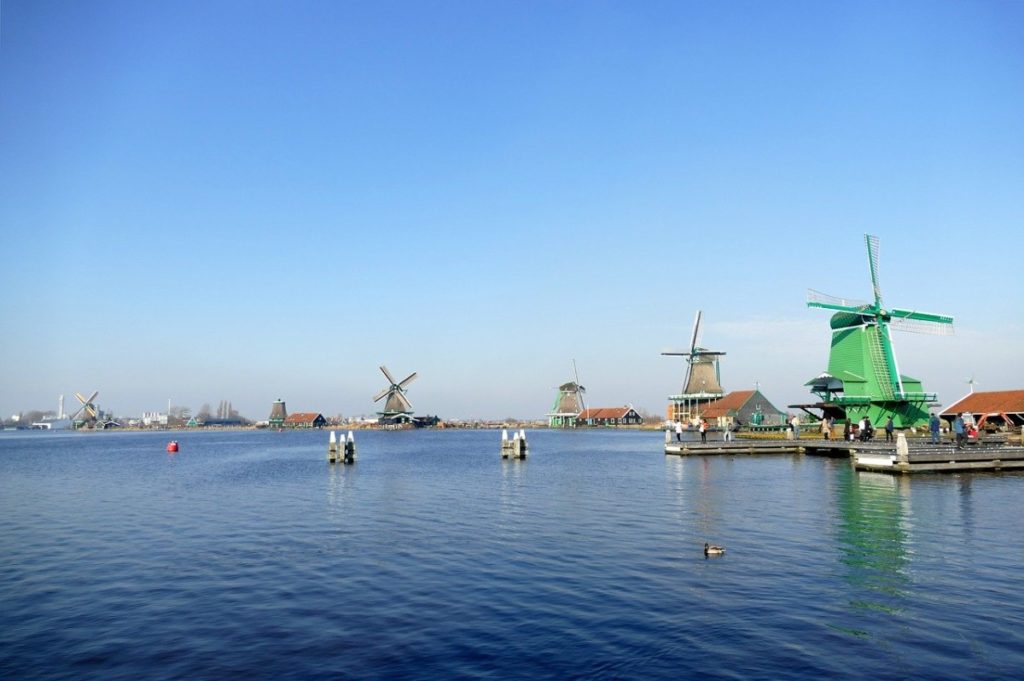
The Dutch Government has already taken measures to try and quell tourism in Amsterdam. Stricter Air BnB rules have been imposed, Schiphol airport’s capacity is being capped and IAmsterdam was removed from outside the Rijksmuseum. The number of beer bicycles permitted in the city has been reduced and actions are being taken to protect the sex workers in the Red Light District from gawping tourists.
But the tourism expenditure report from the last year shows tourists are spending more than ever in the Netherlands . In 2018, there were 19 million tourists and NBTC Holland Marketing anticipate this will increase by at least expects a 50% by 2030, reaching at least 29 million tourists.
“Instead of destination promotion it’s time for destination management”
A tourist board policy document states “We say that ‘more’ is not always better, certainly not everywhere. To be able to control visitor flows, we must take action now. Instead of destination promotion it’s time for destination management”, the Guardian reports.
Majority in the Lower House demand action from government
SP Member of Parliament Frank Futselaar, tells NOS “You see that there are a lot of tourists in a number of places in the Netherlands. In addition, there are other regions that would like a lot more tourists. But there is no central policy.”
Most of the tourism efforts are put into places like Amsterdam, Zaanse Schans, Giethoorn and Keukenhof. But many places in the Netherlands are equally as nice and promoting those lesser known areas will help spread tourism across the whole country.
The NBTC is funded by both private companies and through government subsidies. This means it is important to consider whether there are any conflicts of interest with a new policy about distributing tourism efforts.
To be fair and just, the NBTC will need to loosen ties with government parties.

How to counteract overtourism?
Spread tourists out.
Jeroen Klijs, Breda University of Applied Sciences tourism researcher and professor, offers a solution to the overcrowding in cities like Amsterdam, RTL news reports.
“you have to move the Germans and Belgians who are coming for the third time and also the Dutch themselves to go to more unknown locations. That can be done with marketing, but also by making attractions more attractive and improve accessibility”
If you look at the statistics for what nationalities come for say, Easter weekend in the Netherlands, it reveals 65% of the tourists come from Germany and 25% from Belgium. Spreading frequent visitors out would help prevent the hotspots from getting bombarded.
Try and recruit “good” travellers
Many people come to the Netherlands for stag dos or a party weekend. Amsterdam has invested lots of time in trying to shake its sex, drugs and rock and roll reputation but in the words of Mark Twain:
“Give a man a reputation as an early riser and he can sleep ’til noon.”
There is still a lot of progress to be done but it is important to keep emphasising that “cities are not the playgrounds of tourists; we only want them because they make the city more liveable for residents”, Xavier Font, a professor of sustainability marketing at the University of Surrey, tells the Guardian .
With campaigns such as the Enjoy and Respect campaign, launched last year, the Dutch tourism board have also started making a stand against offensive behaviour in Amsterdam.
Market smarter, not more
Many tourism boards measure their success by numbers but perhaps it is time to change the tactic. Instead of recruiting as many tourists as possible, they should try and extend the length tourists visit for.
Initiatives such as Marry an Amsterdammer is part of a wider movement to get people to see a more authentic side to the Dutch capital, instead of using the city as a party escape.

Connecting with a local will encourage people to be more respectful and dispel the notion that we are not accountable for our actions when we are abroad just because “we’re on holiday”.
If you are going to travel, consider less known destinations and discover hidden gems. Support local businesses and distribute your spendings. Remind yourself you are a visitor and make sure to respect the locals.
Feature image:vvaniasantoss/Pixabay

It’s difficult to control tourism but it’s easy to control rowdy tourists. What might help is an organization of volunteers, supported by the city and police, who wear an identifiable jacket, hat or insignia to monitor unruly tourists and report to police any incidences of public rudeness.
LEAVE A REPLY Cancel reply
Save my name, email, and website in this browser for the next time I comment.
This site uses Akismet to reduce spam. Learn how your comment data is processed .
Related posts
How to get from amsterdam to london in 2024, latest posts, bidding wars and limited supply: here’s why it’s even harder to buy a house in nl, hybrid work in the netherlands: 5 things to know, 7 ways raising a child in the netherlands is different, it's happening, upcoming events, ‘in brilliant light’: marvel at contemporary african art at this exciting new exhibit, cherry blossom season, how to buy a house in the netherlands: this webinar covers it all, how can i get a mortgage in the netherlands this webinar is the first step, considering a bsc in business administration check out nyenrode university’s amsterdam open day, want to elevate your career check out nyenrode university’s open day for a masters in management, king’s day (koningsdag), national remembrance day (dodenherdenking), liberation day (bevrijdigingsdag), mother’s day (moederdag-bloemendag), the latest dutch news. in your inbox., woah, you look pretty good here.
We're constantly hunting for the latest, greatest, and most Dutch spots for our readers. Want your business to reach an unrivalled expat and international audience?
We like you - a lot
© 2023 All Rights Reserved. All material on this website (DutchReview) is strictly copyright and all rights reserved. If you are dissatisfied with the website or any content or materials on it, your sole exclusive remedy is to discontinue your use of the website. The website may provide links to other websites on the Internet, the content of which is not in our control. Whilst every effort has been made to ensure accuracy, the publisher cannot accept responsibility for omissions and errors. If you have found material on this website which is copyrighted by others, please contact the webmaster on this matter in order to have it removed.

How citizens change Arkansas' laws
V oters could have a profound impact on the state's laws this November, depending on how many proposed issues make it on the ballot.
- We're looking at the many questions that may be put to referendum.
Why it matters: Arkansas voters can change or reject laws enacted by the state Legislature through a citizen-initiated ballot process.
Any measure that makes it on the ballot allows residents to speak out with a vote this fall.
State of play: Attorney General Tim Griffin's office approved 14 separate initiatives on topics ranging from medical marijuana to overturning the LEARNS education act — from cutting taxes on feminine-hygiene products to the state's freedom of information law.
- Not all of those will appear on the ballot.
How it works: Arkansas citizens can propose a ballot initiative as a state statute (a change to a law) or a constitutional amendment (a more significant change to the state's constitution ).
- They also may repeal legislation with a veto referendum .
- State lawmakers also can place measures on the ballot as legislatively referred state statutes or constitutional amendments .
The state AG must review and approve the popular name and ballot title for each citizen-initiated statute or amendment for it to move forward.
- Once the language has been approved, which can take several attempts, citizens can begin the petition process.
Signature requirements vary for each of the three forms of citizen-initiated proposals, based on a percentage of the votes cast in the most recent gubernatorial election.
- State statute changes require 8% (72,563 signatures); constitutional amendments require 10% (90,704); and veto referendums require 6% (54,422).
- This year, signatures need to be collected by July 5 to get an issue on the ballot.
The fine print: Numbers alone aren't enough. A new law requires signatures to be collected from registered voters in at least 50 of the state's 75 counties , up from the previously required 15.
- A complaint seeking to overturn the law was filed last year, but it may not be resolved in time to affect this year's process.
The bottom line: Just over 50% of registered Arkansas voters turned out in the midterm elections.
Our thought bubble: As the saying goes — you can't complain if you don't vote.
Go deeper: Tampons to autos — four proposed ballot measures in Arkansas
Get the rundown of the biggest stories of the day with Axios Daily Essentials.

Arizona Supreme Court rules a near-total abortion ban from 1864 is enforceable
PHOENIX — The Arizona Supreme Court ruled Tuesday that a 160-year-old near-total abortion ban still on the books in the state is enforceable, a bombshell decision that adds the state to the growing lists of places where abortion care is effectively banned.
The ruling allows an 1864 law in Arizona to stand that made abortion a felony punishable by two to five years in prison for anyone who performs one or helps a woman obtain one.
The law — which was codified in 1901, and again in 1913 — outlaws abortion from the moment of conception but includes an exception to save the woman’s life.
That Civil War-era law — enacted a half-century before Arizona even gained statehood — was never repealed and an appellate court ruled last year that it could remain on the books as long as it was “harmonized” with a 2022 law, leading to substantial confusion in Arizona regarding exactly when during a pregnancy abortion was outlawed.
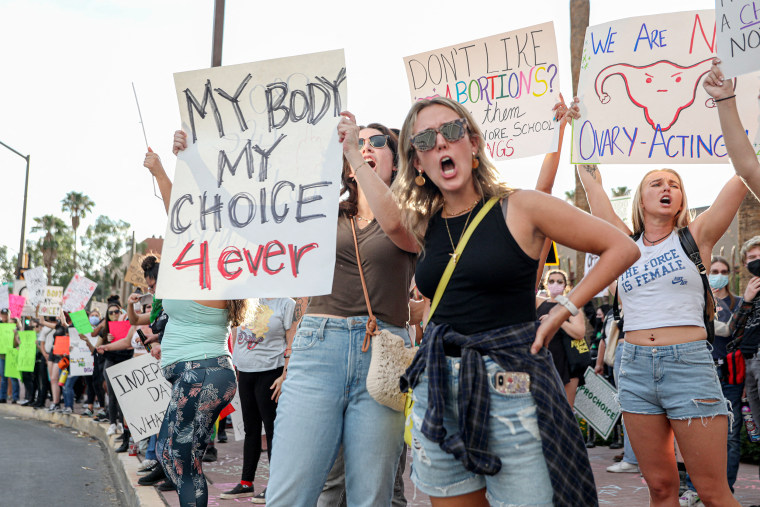
The decision — which could shutter abortion clinics in the state — effectively undoes a lower court’s ruling that stated that a more recent 15-week ban from March 2022 superseded the 1864 law.
The Arizona Supreme Court said it would put its decision on hold for 14 days, writing that it would send the case back to a lower court so that court could consider “additional constitutional challenges” that haven’t yet been cleared up.
Attorney General Kris Mayes, a Democrat, said moments after the ruling that she would not enforce the law.
“Let me be completely clear, as long as I am Attorney General, no woman or doctor will be prosecuted under this draconian law in this state,” Mayes said in a statement, adding that the decision was “unconscionable” and “an affront to freedom.”
Democrats all the way up to President Joe Biden also blasted the ruling.
“Millions of Arizonans will soon live under an even more extreme and dangerous abortion ban, which fails to protect women even when their health is at risk or in tragic cases of rape or incest,” Biden said in a statement. He called the ban “cruel” and “a result of the extreme agenda of Republican elected officials who are committed to ripping away women’s freedom” and vowed to “continue to fight to protect reproductive rights.”
Vice President Kamala Harris announced shortly after the ruling that she would travel to Arizona on Friday “to continue her leadership in the fight for reproductive freedoms."
Responding to questions from NBC News about the Arizona ruling, a spokesperson for Donald Trump's campaign referred only to the former president's comments on Monday that abortion restrictions should be left to states.
“President Trump could not have been more clear. These are decisions for people of each state to make," Trump campaign national press secretary Karoline Leavitt said.
Arizona Gov. Katie Hobbs called for the GOP-controlled Legislature, which is currently in session, to repeal the 1864 ban, though there was no immediate indication that Republican lawmakers in either chamber would take up such an effort.
"We are 14 days away from this extreme ban coming back to life," Hobbs, a Democrat, said at a press conference. "It must be repealed immediately."
While Hobbs said she was "sure" reproductive rights advocates would appeal the ruling in the 14-day window they were given, she also suggested that the best avenue to counter the ruling would be for voters to support abortion rights on the November ballot. A separate, ongoing suit would allow for abortion providers to continue providing services through the 15th week of pregnancy for another 45 days.
"It is more urgent than ever that Arizonans have the opportunity to vote to enshrine the right to abortion in our constitution this November. I’m confident that Arizonans will support this ballot measure, and I’m going to continue doing everything in my power to make sure it is successful," Hobbs said.
In a 4-2 ruling, the court’s majority concluded that the 15-week ban “does not create a right to, or otherwise provide independent statutory authority for, an abortion that repeals or restricts” the Civil War-era ban “but rather is predicated entirely on the existence of a federal constitutional right to an abortion since disclaimed” by the 2022 Dobbs decision that overturned Roe v. Wade.
“Absent the federal constitutional abortion right, and because” the 2022 law "does not independently authorize abortion, there is no provision in federal or state law prohibiting” the 1864 ban.
They added that the ban “is now enforceable.”
Tuesday’s ruling is the latest chapter in a decadeslong saga of litigation in the battleground state over abortion rights.
Reproductive rights groups had sued to overturn the 19th century law in 1971. But when the Roe decision came down in 1973, a lower state court ruled against those groups and placed an injunction on the 1864 ban that remained in effect until the Dobbs decision.
In March 2022, Republican lawmakers in the state enacted the 15-week trigger ban, which, months later — after the Dobbs decision — snapped into effect. The law makes exceptions for medical emergencies but not for rape or incest.
Litigation resumed after that decision as lawmakers on both sides of the issue sought clarity on whether to enforce the 1864 near-total ban or the 2022 15-week ban.
A state appellate court initially ruled that both the 1864 and 2022 laws could eventually be “harmonized,” but also said that the 15-week ban superseded the near-total abortion ban and put on hold large parts of the older law.
The decision also sent shockwaves through the reproductive rights community in Arizona and nationally.
Angela Florez, the president of Planned Parenthood Arizona, one of the state's remaining abortion care providers, said her group would now only be able to provide abortion care through the 15th week of pregnancy — and only "for a very short period of time."
The issue, however, could soon be in the hands of voters.
Abortion rights groups in the state are likely to succeed in their goal of putting a proposed constitutional amendment on the November ballot that would create a “fundamental right” to receive abortion care up until fetal viability, or about the 24th week of pregnancy.
If voters approved the ballot measure, it would effectively undo the 1864 ban that now remains law in the state. It would bar the state from restricting abortion care in situations where the health or life of the pregnant person is at risk after the point of viability, according to the treating health care professional.
That ballot effort is one of at least 11 across the country that seek to put the issue directly in the hands of voters — a move that has the potential to significantly boost turnout for Democratic candidates emphasizing the issue.
In 2024, that could factor heavily into the outcome of both the presidential and U.S. Senate races in Arizona. Biden, whose campaign is leaning heavily into reproductive rights, won the state by just over 10,000 votes four years ago. And the Senate race features a tough battle to fill the seat held by the retiring independent Sen. Kyrsten Sinema, most likely between Democrat Ruben Gallego and Republican Kari Lake.
During her unsuccessful 2022 run for governor in Arizona, Lake said she supported the 1864 law, calling it “ a great law that’s already on the books .” But Lake now says she opposes the 1864 law , as well as a federal abortion ban, while also acknowledging that her own views regarding state policy conflict with some voters’ preferences.
In a statement following the decision, Lake said she opposed the ruling, adding that "it is abundantly clear that the pre-statehood law is out of step with Arizonans." She called on state lawmakers to "come up with an immediate common sense solution that Arizonans can support."
"Ultimately, Arizona voters will make the decision on the ballot come November," she added.
Gallego, who is backed by several reproductive rights groups, has said he supports the ballot measure. As a member of the U.S. House, he is among the co-sponsors of the Women’s Health Protection Act, which would create federal abortion protections.
In a video posted to X after the ruling, Gallego said he would, with reproductive rights supporters, "fight all the way to November so we can get abortion rights back for women in Arizona."
Other Republicans in the state who’d previously expressed robust support for Roe being overturned joined Lake in condemning the ruling. Reps. Juan Ciscomani and David Schweikert , who both face tough re-elections this fall, both called on state lawmakers to address the issue “immediately.”
The ruling Tuesday — the second in a swing state on the issue in as many weeks — further highlights the already prominent role abortion rights will play in Arizona and across the country.
Last week, the Florida Supreme Court upheld a 15-week ban on abortion in the state, which effectively meant that a six-week abortion ban, with exceptions for rape, incest and the life of the woman, that Gov. Ron DeSantis signed into law last year will take effect. The state's high court also allowed a proposed amendment that would enshrine abortion protections in the state constitution to appear on the November ballot.
Tuesday's decision, while jarring to reproductive rights groups, wasn’t entirely unexpected. All seven justices on the Arizona Supreme Court were appointed by Republican governors, and during opening arguments in December, they aggressively, but civilly, quizzed attorneys on both sides about the fact that the 15-week ban enacted last year did not feature any language making clear whether it was designed to repeal or replace the 1864 ban.
Only six justices participated in Tuesday’s decision, however, after Justice Bill Montgomery — who previously accused Planned Parenthood of practicing “generational genocide” — recused himself. (The court’s chief justice did not appoint another judge to take the spot, which is an option under Arizona law.)
The abortion landscape in Arizona has been uniquely confusing since Roe v. Wade was overturned.
While the 1864 law had been on hold after the Supreme Court’s 1973 Roe decision, then-Arizona Attorney General Mark Brnovich, a Republican, successfully sued in 2022 to have that injunction lifted following the overturning of Roe, putting the ban back into effect — though a higher court put that ruling on hold.
But after Mayes succeeded Brnovich as attorney general, she announced that she would not enforce the 1864 ban.
That led to suits from anti-abortion groups seeking enforcement of the ban, which ultimately led to the case making its way up to the state Supreme Court.
Adam Edelman is a political reporter for NBC News.
Alex Tabet is a 2024 NBC News campaign embed.
- Skip to main content
- Keyboard shortcuts for audio player
- Your Health
- Treatments & Tests
- Health Inc.
Public Health
How florida and arizona supreme court rulings change the abortion access map.

Selena Simmons-Duffin
Hilary Fung
In a few weeks, Florida and Arizona are set to join most states in the southern U.S. in banning abortion. It's a significant shake up to the abortion legal landscape, and data shared exclusively with NPR maps and quantifies what the changes will mean for millions of Americans.
On Tuesday, the Arizona Supreme Court cleared the way for an 1864 law to be enforced. That law completely bans abortion except when someone's life is in danger. Last week, the Florida Supreme Court made its decision to allow a ban on abortions after six weeks gestation to take effect on May 1.
Caitlin Myers , an economics professor at Middlebury College in Vermont, has been tracking abortion facilities and travel distances since 2009. She analyzed how these latest rulings will affect the access map.
"Because of these bans, it's about 6 million women of reproductive age who are experiencing an increase in distance of more than 200 miles," she says.
She points out that Floridians who are seeking abortions after six weeks will have to travel nearly 600 miles to North Carolina, which has a 72-hour waiting period. "So we're talking about a day's drive to a state that requires you to engage in this multi-day process," Myers says. "A lot of people might end up going several hundred miles further to Virginia."
For people in Arizona, after the 1864 law takes effect, "their nearest destinations are pretty long drives. They're going to be facing hundreds of miles to reach southern California, New Mexico, Colorado," Myers says. "I think Arizona spillover is likely to affect California in a way that California hasn't yet been affected by bans."
Myers helms the Myers Abortion Facility Database . She has gathered data about facilities – including clinics, doctors, and hospitals that publicly indicated that they provide abortions – going back more than a decade, using data licensure databases, directories, and Wayback Machine captures of websites from years past. She uses a team of undergraduate research assistants to periodically call facilities and make sure the information is up to date.
Numbers of abortions rise in Florida, decline in Arizona
Although Florida and Arizona have historically both been politically purple states and both have had 15-week abortion bans since 2022, the states have been on different trajectories when it comes to abortion and play very different roles in their regions.
There were about 12,000 abortions in Arizona in 2023, according to the Guttmacher Institute , a research organization that supports abortion rights. Out-of-state travel accounted for 3% of abortions in the state, and the overall number of abortions has been declining there in recent years, Guttmacher finds.
By contrast, there were nearly 85,000 abortions in Florida in 2023, according to state data , just a few thousand fewer than Illinois, which has positioned itself as a haven for people seeking abortions in the post- Roe era. And the number of abortions happening in the state has been on the rise. "The majority of the increase has been driven by out-of-state travel into Florida because of bans in surrounding states," explains Isaac Maddow-Zimet , a Guttmacher data scientist. "That really speaks to the role that Florida has played in the region where there really aren't many other options."
The Alliance Defending Freedom, which brought the case in Arizona, frames those affected by the new laws in a different way. "We celebrate the Arizona Supreme Court's decision that allows the state's pro-life law to again protect the lives of countless, innocent unborn children," the organization wrote in a statement this week .
Even with new bans in place, there are a few ways residents of Florida and Arizona will be able to access abortion without driving hundreds of miles. People with means will be able to fly to states where abortion access is protected. Others will be able to use telehealth to connect with providers in those states and receive abortion medication in the mail – a practice that has been growing in popularity in recent months. Telehealth medication abortions, though, could be curtailed by a pending case before the U.S. Supreme Court. (A decision in that case is expected this summer.)
In Florida, some will be able to get abortions before the six-week gestational limit, which is about two weeks after a missed period. "Folks have a really narrow window in order to meet that gestational duration limit if they even know about their pregnancy in time," Maddow-Zimet of Guttmacher explains. "And that's something that's particularly difficult in Florida because Florida requires an in-person counseling visit 24 hours before the abortion."
'A substantial barrier'
Many thousands of people in Florida and Arizona will be unable to navigate those options and will carry their pregnancies instead, Myers says.
"It's easy to think – if an abortion is so important to somebody, they will find a way, they will figure it out," she says, but research on people seeking abortions illustrates why that's not always possible. "[Many] are low income. They're in very difficult life circumstances. They're experiencing disruptive life events like the loss of a job or breaking up with a partner or threatened eviction. Many of them are parenting and have difficulty obtaining child care." One large study showed about 80% of people seeking abortions had subprime credit scores.
"If you think about all that, it is perhaps not so surprising that the results of my research and other people's research shows very strongly and unequivocally that distance is a substantial barrier to people who are seeking abortions," Myers says.
Mary Ziegler , a law professor and historian of reproductive rights at the University of California - Davis, says it's worth noting how these states both came to have new bans. "The common denominator is conservative state supreme courts reaching decisions contrary to what voters would want, interestingly, in an election year when those judges are facing retention elections," she says.
Voters in Florida will have a chance to weigh in on abortion access in November, when an amendment to their state constitution will be on the ballot. An effort to put an abortion amendment on the ballot in Arizona is also underway. Abortions rights opponents in both states have pledged to fight the measures.
- abortion access
- Abortion rights

IMAGES
COMMENTS
From January 1, 2024, new rules for living in the city will apply. The campaign should run for a year until early 2025. First up are new housing rules, which aim to increase the housing supply for ...
Further measures - such as reducing the number of Airbnb rentals, hotels and river cruises - aim to dial down tourism overall, bringing annual overnight stays from 18 million to below 10 million. Amsterdam is also increasing measures to discourage the sale of alcohol. Already, you can't buy alcohol after 4pm between Thursday and Sunday ...
Reducing the hours of operations for bars, clubs and the Red Light District on the weekends. Bars and clubs will close at 2 a.m. with no new visitors allowed after 1 a.m., while sex work ...
Public initiative and tourism policy. In response to a public initiative titled 'Amsterdam has a choice', in June 2021 the City Council approved a new policy on tourism, 'Tourism in balance in Amsterdam'. The plan sets a maximum number of overnight stays and day visits by tourist, with a maximum of 20 million visitors per year.
BBC News. It will soon be illegal to smoke cannabis on the street in Amsterdam's red light district under new regulations unveiled by the city. The laws will come into effect from mid-May and aim ...
Wednesday 11 August 2021. You can only imagine locals felt relieved. In Amsterdam last March, lockdown set in and tourism was put on pause. For the first time in forever, there weren't tens of ...
Amsterdam is famous for an array of things, including its thriving nightlife - red light district, cannabis cafes and bars - attracting 20 million tourists per year. Image source, EPA Image caption,
07/21/2023 July 21, 2023. Amsterdam has banned smoking cannabis in public and is imposing fines to get rid of party tourists. Can the city change its party tourism reputation?
Smoking weed on the streets of Amsterdam 's inner city will soon be banned, the city's council has announced. The destination has long been known for cannabis but local residents have complained ...
Empty canal boats in the center of Amsterdam on a recent evening. Ilvy Njiokiktjien for The New York Times. "The public space is dominated by facilities that are almost all redolent of sex ...
The strength of this regulation is that we agreed together how many tourists we actually think are good for Amsterdam. Both the minimum and the maximum level." The Amsterdam city council adopted a regulation that limits tourism in the Dutch capital to 20 million tourist overnight stays per year. The municipality will "intervene" if that limit ...
Next year, visiting Amsterdam will get more expensive. The Dutch capital has confirmed a rise its tourist tax on hotel rooms to 12.5% in 2024 - making for the highest tourist tax in Europe. The increase will apply to travelers staying overnight in hotels, short-term rentals or guesthouses, and affect those visiting on cruise ships, too.
The mayor of Amsterdam, Femke Halsema, who has the last word on law and order, wants a temporary ban on non-residents in coffee shops - by enforcing a national residents-only rule, known as the ...
The "Stay Away" campaign will start in early 2023 through a dissuasion campaign targeting foreign visitors that go to Amsterdam only "for alcohol, drugs, and sex." Among the proposed measures ...
Limit noise and drunkenness, clean up your mess and don't pee in the canals. Keep in mind the locals, and they will welcome you with open arms. Please be aware of the law, and the on-the-spot fines for unacceptable behaviour as follows: €150 for public urination. €150 for littering. €150 for noise pollution. €100 for drunkenness.
Rome currently has the highest fixed price tax in Europe, at €7 per person per night in a five star hotel. That means that even a room at the Hotel de Russie, which costs €815 on March 28 ...
In an effort to combat the antisocial behaviour, the local government has recently launched a "stay away" campaign, targeting 18-25-year-old men coming from Great Britain. This is just one of several measures being rolled out by the city of Amsterdam to address the problem, with more in the pipeline, including potentially a tourism tax.
The mayor of Amsterdam, Femke Halsema, announced that, within the next year, the city plans to change its laws so only Dutch residents can visit its more than 150 cannabis cafes. This move could ...
Prostitution and brothels have been legal in the Netherlands since 2000. Prostitutes are supposed to have work permits and enjoy the protections of the country's labor laws. Another area of ...
It will soon be illegal to smoke cannabis on the street in Amsterdam's red light district. Amsterdam has announced the city is making some changes to crack down on nuisance tourism. A new law is ...
A tourism expert, who for years worked on changing Amsterdam's image, said many Britons took the invitation to be yourself to mean being dressed in a tutu, lying drunk with all your mates in a ...
The World Tourism and Travel Council revealed that in 2018, 1.4 billion international tourist trips were made and more than 36% of these involved a visit to one of the world's 300 most popular cities, CNN reports. Many people protest tourism and graffiti signs like these around their home city. Source: Ted & Dani Percival/Flickr
Amsterdam charges 7% of the hotel rate plus 3 euros per person per night. In Vienna, it's 3.2% of the total room rate, excluding breakfast and sales tax, and then lopping off 11% of the ...
State statute changes require 8% (72,563 signatures); constitutional amendments require 10% (90,704); and veto referendums require 6% (54,422). This year, signatures need to be collected by July 5 ...
A state appellate court initially ruled that both the 1864 and 2022 laws could eventually be "harmonized," but also said that the 15-week ban superseded the near-total abortion ban and put on ...
The state Supreme Court has ruled Arizona should follow a restrictive abortion law dating back to the 1860s. Since Dec. 2022, Arizona doctors have been allowed to provide abortions up to 15 weeks ...
How far do women have to travel to access abortion care? An economics professor has been tracking that data since 2009. Interactive maps show how access has changed dramatically since 2021.